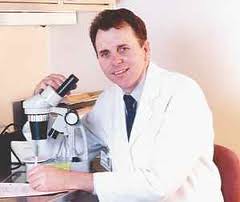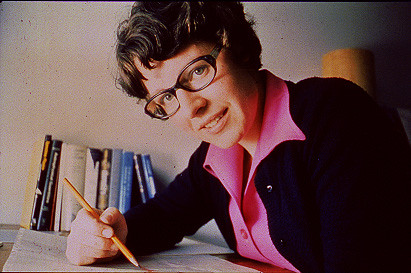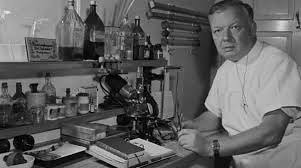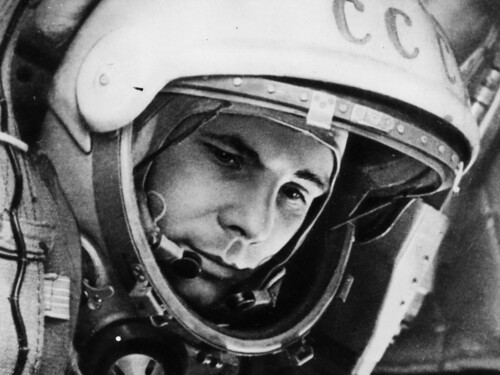Will the world find salvation or apocalypse in IT?
 First published in Computing, May 2004
First published in Computing, May 2004Why do pundits so often ignore the possibility that IT might improve life?
In recent weeks, official thinking on the future has become more apocalyptic than ever. So when I listened to a civil servant, a scientist and a design researcher talk about the next 50 years, I wanted to hear how IT might come to the planet’s rescue, should a rescue be required.
Anxiety was certainly at a high level. In 2054, the feeling is Western business schools may find their students and thus their campuses moving to India, where the world’s real wealth creation will take place. We will be hit by failing states at the eastern end of the enlarged EU, Islamic boycotts of our goods, a demographic timebomb. and employers who demand DNA tests to check our personalities.
Air quality will be kaput. Homes will need to have a neutral impact in terms of energy, carbon emissions and waste. Venice could be under water. Last, global warming will increase the range of “invasive alien species” coming into Britain. Fewer beech trees, more Colorado beetles.
Amid the learned panic, IT-intensive printing did win admiration. HP, it was announced, has begun work on machines that will print human cells, which will help in organ donation. Stereolithography – a system using lasers programmed to etch out prototype products from solutions of photosensitive polymers – could become an in-home phenomenon.
The locational aspect of IT was also popular. To improve life on the street, it was argued, displays on your mobile will portray different kinds of flowers, depending on where you are, and poster sites will adjust themselves when they detect your presence. Territory itself will be laden with IT interfaces, as BT’s concept of “digital air” – connections available to you everywhere you go – comes closer. Meanwhile, IT will improve not just the detection of animal infections in the lab, but also the traceability of infections in the field. There will be an RFID tag in every cow, chicken and sheep.
It sounded a bit hopeful. Our designer invoked ambient environments – spaces which could be aware of the people within them; spaces, or even clothes, filled with computers that could be, variously, ubiquitous, pervasive and invisible.
Yet for all the nods in favour of IT, it remained the repository not just of hopes, but also of fears. We would live – already live – in a surveillance society. I heard a new argument: that Britons will need the countryside to fight the stress brought on by email.
Altogether, there was little sense that IT could help us resist the threats of tomorrow. And there was no sense whatever that it could raise productivity in the Third World and so mitigate medical and social problems there. The potential in enterprise IT and computer-aided manufacture was never registered.
IT entertains British policy wonks, it appears, only in urban, residential or biological contexts. Production? That is indeed left for Indians to worry about.
Fmr President of Kenya on Trump cutting off foreign aid:
“Why are you crying? It’s not your government, he has no reason to give you anything. This is a wakeup call to say what are we going to do to help ourselves?”
America first is good for the world.
Our entire Green Socialist establishment should be banged up under the ‘Online Safety’ laws, for spreading demonstrable lies (the ‘climate crisis’), causing non-trivial harm to the industrial working class, ordinary drivers, farmers, taxpayers etc, etc.
#Chagos? #Mauritius PM Navin Ramgoolam "is reported to want Starmer to pay £800m a year, plus ‘billions of pounds in #reparations’." (14 January) https://www.spiked-online.com/2025/01/14/the-chagos-islands-deal-is-an-embarrassment/
Now the Torygraph wakes up https://telegraph.co.uk/gift/1ff8abbb462cd609
Read @spikedonline - first with the news!
Articles grouped by Tag
Bookmarks
Innovators I like

Robert Furchgott – discovered that nitric oxide transmits signals within the human body

Barry Marshall – showed that the bacterium Helicobacter pylori is the cause of most peptic ulcers, reversing decades of medical doctrine holding that ulcers were caused by stress, spicy foods, and too much acid

N Joseph Woodland – co-inventor of the barcode

Jocelyn Bell Burnell – she discovered the first radio pulsars

John Tyndall – the man who worked out why the sky was blue

Rosalind Franklin co-discovered the structure of DNA, with Crick and Watson

Rosalyn Sussman Yallow – development of radioimmunoassay (RIA), a method of quantifying minute amounts of biological substances in the body

Jonas Salk – discovery and development of the first successful polio vaccine

John Waterlow – discovered that lack of body potassium causes altitude sickness. First experiment: on himself

Werner Forssmann – the first man to insert a catheter into a human heart: his own

Bruce Bayer – scientist with Kodak whose invention of a colour filter array enabled digital imaging sensors to capture colour

Yuri Gagarin – first man in space. My piece of fandom: http://www.spiked-online.com/newsite/article/10421

Sir Godfrey Hounsfield – inventor, with Robert Ledley, of the CAT scanner

Martin Cooper – inventor of the mobile phone

George Devol – 'father of robotics’ who helped to revolutionise carmaking

Thomas Tuohy – Windscale manager who doused the flames of the 1957 fire

Eugene Polley – TV remote controls


0 comments